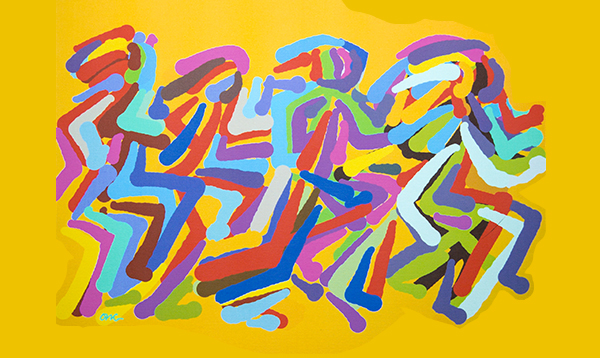Plantar faciitis may not be a term you use very often but if you experience pain in your arch with the first few steps in the morning and after long periods of walking or even sitting, you may be experiencing it first hand. Plantar fasciitis is an inflammatory process usually due to repetitive strain of the planar fascia. The plantar fascia is a sheet of connective tissue that envelopes the muscles at the bottom of the foot. It begins at the heel, crosses the arch and ends at the ball of your foot. There are some general exercises that can be quite helpful. If the symptoms do not clear up over a two to three week period of following these guidelines it may be necessary to consult a physical therapist who willcustomize the exercises and treatment based on your foot type and lower extremity biomechanics. In severe cases an injection may be helpful and there are also surgical options. Here are some guidelines to get you started on recovery.
1) STRETCHING the calf muscles and the muscles of the arch is critical. Repeat all stretches 3 times per day.
Stand with the painful foot back and crossed past the midline of the body so the majority of weight is felt on the outside of the foot. Keep the heel on the ground and the knee straight. Lean forward bending the front knee until a stretch is felt in the back of the lower leg. Hold the stretch for 45 seconds.
a) Repeat the above position except with the back knee bent also so the stretch is felt further down into the Achilles region. Hold 45 seconds
b) While sitting, pull back on the big toe until feeling a mild stretch through the arch of the foot. Hold 30 seconds
c) Take a baseball, soft ball, or Coke bottle (with ridges) and roll it back and forth under your foot putting as much pressure as you can tolerate without causing pain. Repeat 10-15 times
2) STRENGTHEN the muscles at the bottom of the foot
a) Put a hand towel on the kitchen floor stand on in and crunch it up by pulling with your toes. Repeat this 5 to 7 times daily.
b) Stand with feet shoulder width apart, then roll to the outside(towards pinky toe) of both feet and slowly roll to the inside (become flat footed) of both feet. Repeat 10-15 times 3 times per day.
c) Sitting in a chair imagine that you have a pencil sticking out of your heel, use it to draw a horizontal line 10 times and then a circle 10 times. Repeat 2 times per day. * Make sure you are drawing with your heel only and not dong a lot of wiggling of the toes and foot.
3) Be sure you are wearing appropriate and supportive shoes. Replace running shoes if they are worn out or not of a good quality. Go to a respectable running store or ask your therapist about good running shoes for athletics and daily activity even if you are not an avid runner.
4) Night Splints. If you have excessive pain first thing in the morning you may want to consider wearing night splints. These are devices that will keep your foot on a stretch throughout the night to help avoid the tightening that takes place when a structure is inflamed and painful. They are available at some drug stores and medical supply stores.
5) Ice the bottom of your foot with a frozen Dixie cup peeled back to expose the ice, by rubbing it on your foot for 4 to 6 minutes 3 times per day.
6) Orthotic intervention may be necessary if the problem has been chronic and if you foot type indicates a need for this type of intervention. A physical therapist can assess this and create the appropriate device for you.


0 Comments